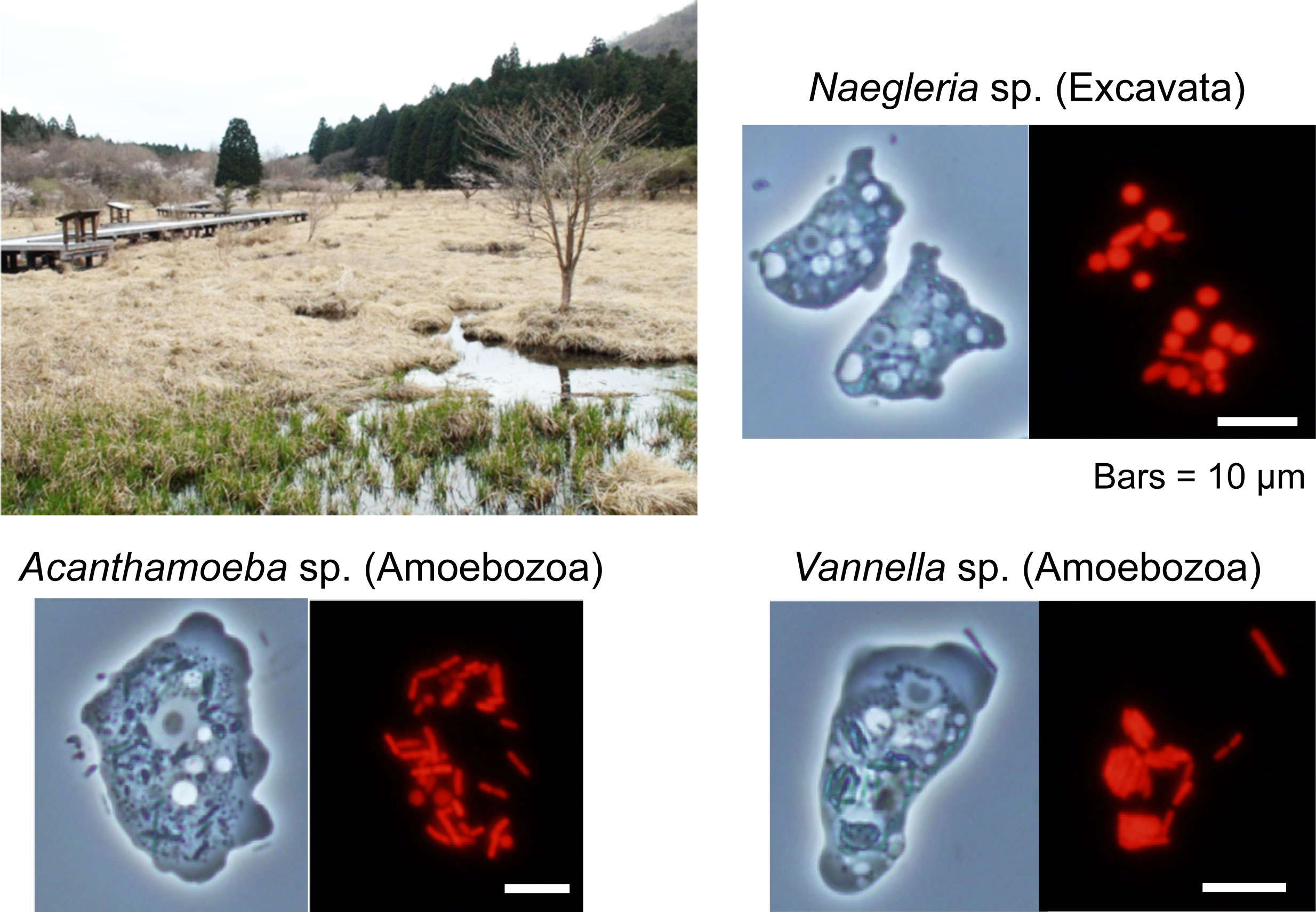Feeding on phototoxic algae: training for unicellular predators to evolve to algae
Responses of unicellular predators to cope with the phototoxicity of photosynthetic prey
Akihiro Uzuka*, Yusuke Kobayashi*, Ryo Onuma*, Shunsuke Hirooka, Yu Kanesaki, Hirofumi Yoshikawa, Takayuki Fujiwara, and Shin-ya Miyagishima
(*Co-first authors)
Nature Communications 10, 5606 (2019) DOI:10.1038/s41467-019-13568-6
Link to “Behind the paper” in Nature Ecology and Evolution.
Feeding on unicellular photosynthetic organisms by unicellular eukaryotes is the base of the aquatic food chain and evolutionarily led to the establishment of photosynthetic endosymbionts/organelles. Photosynthesis generates reactive oxygen species and damages cells; thus, photosynthetic organisms possess several mechanisms to cope with the stress. Here, we demonstrate that photosynthetic prey also exposes unicellular amoebozoan and excavate predators to photosynthetic oxidative stress. Upon illumination, there is a commonality in transcriptomic changes among evolutionarily distant organisms feeding on photosynthetic prey. One of the genes commonly upregulated is a horizontally transferred homolog of algal and plant genes for chlorophyll degradation/detoxification. In addition, the predators reduce their phagocytic uptake while accelerating digestion of photosynthetic prey upon illumination, reducing the number of photosynthetic cells inside the predator cells, as this also occurs in facultative endosymbiotic associations upon certain stresses. Thus, some mechanisms in predators observed here probably have been necessary for evolution of endosymbiotic associations.
This study was supported by JSPS KAKENHI to S.-y.M. (16K14791 and 17H01446) and to A.U. (17J08575), and by the MEXT Program for Strategic Research Foundation at Private Universities to Yu.K. and H.Y. (2013–2017 S1311017).

Figure: Three species of amoebae feeding on algae were isolated from Kodanuki Marsh in Fujinomiya, Japan on April 23, 2013. Although they belong to different eukaryotic supergroups (two belong to Amoebozoa, one to Excavata), they have independently evolved a similar strategy to cope with the photosynthetic oxidative stress that caused by the ingested photosynthetic prey. Red is fluorescence of chlorophyll (a photosynthetic pigment).















